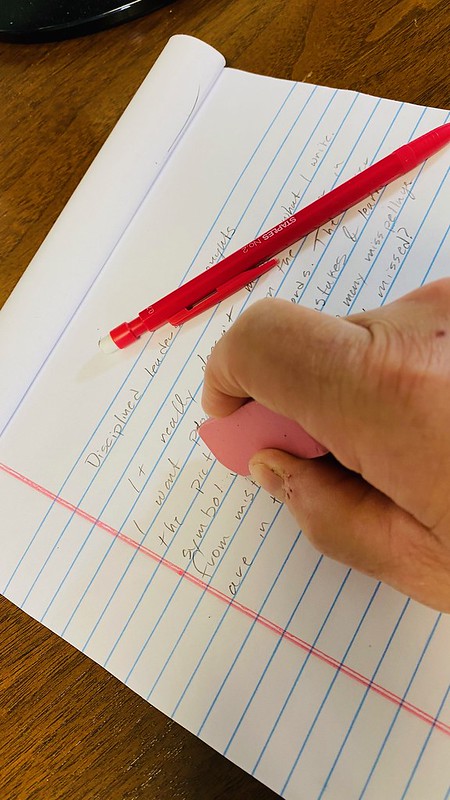Twenty-one paces north. Halt for 21 seconds. Right face and freeze for 21 seconds. Right face. Change shoulder arms wait 21 seconds. March south 21 paces and repeat. This is the life of a Tomb Guard, one of the most elite small units in the United States Army. Every day, around the clock, in any weather they stand guard over the bodies of three unknown Soldiers honoring their sacrifice.

Photo from Explore: The Tomb of the Unknown Soldier. Arlington National Cemetery.
Most Americans are familiar with the 20th century Tomb of the Unknown Soldiers. There are videos on YouTube of Sentries confronting visitors for acting disrespectfully. There are tales of their dedication to the point of not abandoning their post in the greatest extremes of weather. The view of Washington, DC is one of the best in the area. Few however know there is a second Tomb of Unknown Soldiers.
Less less than half a mile north is the less famous Tomb of the Civil War Unknown Soldiers. This monument was placed over the remains of 2,111 Soldiers found and gathered from the Civil War battles around the Washington, DC area. About 100 yards from the front step of Arlington House, and in Mrs. Lee’s rose garden, this large grave was clearly intended to shame Robert E Lee and his family. The government of the Unite States, at the direction of President Lincoln, acquired the title to the estate after Mrs Lee failed to pay taxes assessed on the property during the Civil War (Hanna, 2001).
By 1864, both sides lost many sons to the fighting. The War Department was tasked with gathering the fallen and ensuring they received proper burials. Even before the United States received the deed to the property, they began burying Soldiers from both sides of the conflict on these grounds. The War Department attempted to return remains of the dead to their families when possible. Before long existing cemeteries were full. Those who could not be identified were gathered in a single location. It is estimated that about one half of those who died fighting in the Civil War could not be identified (Hanna, 2001).
The tomb was described as a pit 25 feet deep and round, it was divided into chambers as it was filled (Hanna, 2001). It is is the first memorial to unknown Soldiers in Arlington National Cemetery. Even though burials in the tomb ended sooner, the monument was not dedicated until September 1866. It was topped with cannon and inscribed,

Photo by Elizabeth Fraser (2017) from the same source above.
Beneath this stone
Repose the bones of two thousand one hundred and eleven unknown soldiers
Gathered after the War
From the fields of Bull Run, and the route to the Rappahanock, their remains could not be identified. But their names and deaths are recorded in the archives of their country, and its grateful citizens
Honor them as of their noble army of martyrs. May they rest in peace.
SEPTEMBER. A. D. 1866 (US Army, ND).
James A. Garfield, then an Ohio Congressman – later President, officiated the first national Memorial Day service at this site in 1868. He denied he had the words to adequately convey the meaning of the deaths of those laid in the Tomb. He noted that in the days before the war, “Peace, liberty, and personal security were blessings as common and universal as sunshine and showers and fruitful seasons.” Of those laid to rest he said,
And now consider this silent assembly of the dead.
What other spot so fitting for their last resting place as this under the shadow of the Capitol saved by their valor? Here, where the grim edge of battle joined; here, where all the hope and fear and agony of their country centered; here let them rest, asleep on the Nation’s heart, entombed in the Nation’s love! (Garfield, 1868)
Arlington National Cemetery also became home to Unknowns from the War of 1812 and the Spanish American War. Those Unknowns from 1812 were originally buried at the Washington Navy Yard. More casualties were identified during the Spanish American War, but not all. They were also buried at ANC (Arlington National Cemetery (2020).

Photo: Library of Congress
People discuss things for which they are willing to die. For many, it is just talk. For those who serve and guard our Nation’s liberty, it is more than talk. On Memorial Day, we remember those who defended liberty with their very lives. For them, defending freedom, justice, and liberty were more than words. They willing risk their lives on every mission, in training or in combat. For those buried in the Tombs of the Unknowns, not only did they give their lives, they surrendered everything, even their identity. That is why the Sentry walks those 21 steps north and south everyday around the clock. Those Soldiers do it to honor those with nothing left to give. When you gather this Memorial Day with family and friends over burgers and beer, remember the Soldier guarding those known but to God. Remember those Unknown who died so you may enjoy the blessings of “Peace, liberty, and personal security”.
References
Arlington National Cemetery (2020). Explore the Tomb of the Unknown Soldier. Arlington National Cemetery History Education Series, Arlington, VA.
Garfield, J. (1886). Decoration day address. What so Proudly We Hail. 2013. Washington, DC. Retrieved from https://www.whatsoproudlywehail.org/curriculum/the-american-calendar/decoration-day-address-1868 5/25/21.
Hanna, J (2001) Arlington house: The Robert E. Lee memorial. U.S. Department of the Interior, National Parks Service, Washington, DC.
Mougel, N (2011) translated by Gratz, J, World War I casualties Reperes
Public Affairs Office (2021), Resource guide/Tomb of the Unknown Soldier centennial commemoration, Arlington National Cemetery, Arlington, VA
U.S. Army (ND). Arlington National Cemetery. Office of Army Cemeteries, Department of the Army, Washington, DC. https://www.arlingtoncemetery.mil/ Retrieved 5/24/2021
(c) 2021 Christopher St. Cyr



